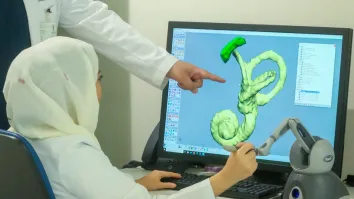
What will drive vascular malformations market growth by 2034
It will be fueled by evolving dynamics and advancements in healthcare.
The global market for vascular malformations is poised for substantial growth by 2034, according to DelveInsight's analysis.
The report said factors such as heightened public awareness, enhanced healthcare access, and advancements in disease understanding are set to bolster market expansion.
About 70.5% of vascular malformations cases occur in the 25 to 44 age group, paralleling demographic trends seen in diabetes cases. Meanwhile, 40% and 51% of diabetes cases are found in 25 to 44 and 45 to 60 aged individuals, respectively.
“The dynamics of the vascular malformations market are expected to change in the coming years,” it stated.
“Despite fewer companies involved in the clinical development of lymphatic malformations, those few have shown promising results,” the report said.
Currently, the market's therapeutic pipeline showcases drugs in mid and early developmental stages, offering significant opportunities for novel treatments. VIJOICE stands as the sole FDA-approved therapy for PROS, underscoring the untapped potential in other vascular malformation categories.
The introduction of forthcoming therapies promises enhanced efficacy and diagnostic improvements, positioning the vascular malformations treatment landscape for transformative growth across major global markets (7MM).
Leading companies like ARTham Therapeutics, Neurelis, Protara Therapeutics, and others are also actively advancing novel drugs in this sector, anticipating market entry in the near term.
“As these cutting-edge therapies continue to mature and gain regulatory approval, they are expected to reshape the vascular malformations market landscape, offering new standards of care and unlocking opportunities for medical innovation and economic growth,” the report noted.
However, challenges persist, including high recurrence rates, poor patient prognoses, and economic burdens associated with treatment. Regulatory scrutiny remains a concern, with potential implications for marketed products based on real-world outcomes.
Additionally, complexities in diagnosis, economic viability, and healthcare specialist shortages pose significant obstacles to market growth.



















 Advertise
Advertise





